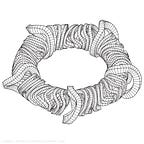The Magic Behind the Screen: Embracing the WYSIWYM Paradigm in Document Creation
Hey there! Let’s dive into the world of document editing and talk about the cool concept of WYSIWYM (What You See Is What You Mean). It’s like the backstage pass to your documents, where you focus on the content and meaning, and let the software worry about making it look pretty.
So, imagine you’re writing a document. With WYSIWYM, you’re not stressing about fonts or colors. Instead, you’re labeling your text based on what it represents. Is it a title? A section heading? A caption for a picture? You mark it, and the editor does the rest. It’s like telling your editor, “Hey, this is important, make it stand out,” and it does just that, but the style can change based on the stylesheet you apply later.
Now, why is this awesome? Because you write once, and format forever. You’re not jumping back and forth between writing and making it look good. This saves you time and keeps your focus on what matters — the content. Plus, when it’s time to export your document, you can choose different styles without any extra work. Want your headings bold and big? Or maybe red and centered? Just pick a style, and voilà, it’s done.
The first system to really embrace this WYSIWYM idea was LyX, but the roots go back to LaTeX and other early publishing systems. These systems separate the structure of your document from its presentation, which is super handy when you want to maintain a consistent look across multiple documents or formats.
In short, WYSIWYM is all about content being king. You focus on the message, and let the editor handle the rest. It’s a game-changer for anyone who wants to create structured, meaningful documents without getting bogged down in the visual details. And that, my friends, is the beauty of WYSIWYM in the computing world. Keep it simple, keep it meaningful, and let the style come later! 🚀
